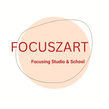Creative Compassion Blog April 11, 2023 ©Freda Blob
Art Journal page January 5th, 2023, Intention Setting. With photo of artwork of ©Eric Isenburger (1902-1944), Portrait of a Dancer, 1928
To approach museum-based peacebuilding, we examine the artwork of persecuted artists and artists whose work relates to that of persecuted art. We want to see, feel, and reflect on artwork that has been degraded, banned, and burned. Seeing original artwork in museums is more powerful than viewing art from digital sources for many reasons
Our 2023 highlight was a trip to the Center for Persecuted Arts Solingen, North Rhine-Westphalia, Germany. There, we learned about a period in art history when artists experienced the most devastating environment
The permanent exhibition showcases masterpieces that were labeled degenerate art in the 1930s and 1940s. While not all of the exhibits resonated with us, we were deeply moved by the show as a whole. We were introduced to stunning, innovative pieces by persecuted Expressionists that spoke to us
'Keep up the positive and don't let despair have the last word!' This is the timeless message we received from the exhibitors
This art made us feel a polyphony of inner voices, sounding more than just one. Of all the voices, the voice of compassion for creative life was the strongest

© Eric Isenburger (1902-1944), Portrait of a Dancer, 1928, Citizen Foundation, Center for Persecuted Arts, Solingen GER
The persecuted arts bear witness to the power of human creativity amidst destructive and life-threatening circumstances. They demonstrate incredible resilience and offer hope
This promise inspires us to follow the work of numerous artists who have been labeled as degenerate. One such place is the Art Museum Reutlingen in Germany, where the artwork of Adolf Hölzel (1853-1934) is exhibited
Hölzel was a progressive and innovative artist and art teacher, a pioneer of modern art who strongly promoted the artistic voices of female artists persecuted for their art
In 1933, a small set of Hölzel's artworks and an impressive number of pieces by his students, the "Hölzel Circle," were to be exhibited at the National Art Exhibition. However, the exhibition was canceled due to the seizure of power by the National Socialist
Three members of the Hölzel Circle had their artwork officially declared degenerate:
- The art of Ida Kerkovius, (banned in 1933), a master student and long time assistant of Hölzel
- The art of Lily Hildebrandt (banned in 1935), also a master student who chronologically documented Hölzel's lectures
- - The art of Max Ackermann (banned in 1936), a painter and designer whose artwork had already been exhibited at the State Art Gallery Stuttgart at that time
Maria Lemmé, another member of the Hölzel Circle who studied with Adolf Hölzel and published his ideas in her book 'Thoughts And Teachings', was deported to Theresienstadt in 1942. Her official date of death is March 28, 1943. Almost all of Maria Lemmé's art was destroyed, except for pictures she had privately given away
Learning about the members of the Hölzel Circle, we visit the Hölzel House in Stuttgart. There, we find traces of their lives and art in a permanent exhibition. Intrigued by their work, we cannot help but hold their heritage in deep respect
We chose Adolf Hölzel as the reference artist for our museum-based Creative Compassion practice because his body of work from the 1920s and 1930s is abstract, while the work of the Hölzel Circle is semi-abstract or figurative
Abstract art offers freedom of expression to practitioners who use fine arts pieces and receptive-active arts engagement as tools to build Relational Empathy from aesthetic feeling. Abstracts are interactive. It is the viewer, not the artist, who gives them meaning



Add comment
Comments